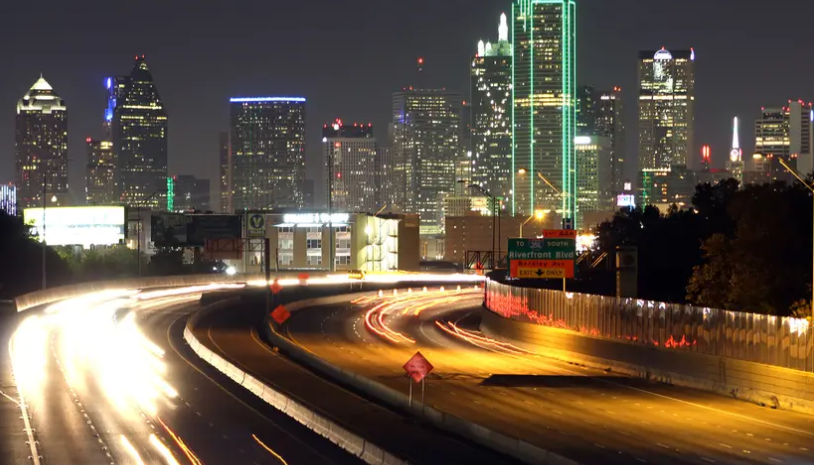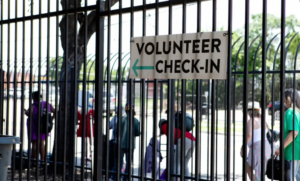Dallas neighborhood established by freed slaves fights to keep its history alive

From Swiss Avenue to the West End, Dallas has many dutifully preserved historic districts. That status is meant to protect the look and feel of some of the city’s oldest neighborhoods, but that hasn’t been the case for Tenth Street, a historically black neighborhood just south of downtown.
Despite its status as a historic district, the neighborhood’s history is fading. The National Trust for Historic Preservation even named Tenth Street one of the most endangered places in the country in 2019.
Empty lots dot the streets on the pie-shaped piece of land. Many homes are abandoned, boarded up and smeared in spray paint.
It’s been 60 years since Patricia Cox’s home has gotten any serious repairs.
“I need repiping, but some of the other homes might need a new roof or some need new flooring,” Cox said.
The houses here have good bones, Cox said, but many have endured decades of neglect.
Longtime resident Shaun Montgomery says it wasn’t always this way.
“They were maintained, and they had beautiful lawns,” Montgomery said. “You don’t see it now, but we loved it. We loved being in the neighborhood.”
A vibrant neighborhood hurt by public policies
Freed slaves settled this part of Dallas after the Civil War. By the 1900s, Tenth Street had become a vibrant community.
The neighborhood, bound by segregation, had no choice but to sustain itself. Black doctors, lawyers and teachers set up offices in their homes.
Montgomery pointed to one such home during a walk around the neighborhood.
“This house belonged to Dr. Nathaniel Watts,” she said. “A lot of the doctors, African American, were not able to practice in the hospitals.”
By the 1950s, Tenth Street was feeling the strain of growth occurring across the city. In 1955, Interstate 35 bulldozed through Tenth Street, and dozens of homes were torn down to make way for construction. Cox said the neighborhood never healed.
“The freeway came right between and cut us off,” she said. “Instead of rebuilding, they just tore it down.”
Wealthy black families moved away in the 1960s, and an exodus of local businesses followed. Dallas mostly forgot about Tenth until 1993, when the city designated it a historic landmark.
That designation was meant to protect Tenth Street, but Cox says the city’s done little to help residents preserve their homes.
“It’s not going to be an arm and a leg to redo some of the homes,” Cox said. “It’s just a matter of wanting to, but the city saw fit to cut us off.”
Residents say a 2010 ordinance contributed to Tenth Street’s decline by allowing the city to raze historic, but neglected, structures that are smaller than 3,000 square feet. Dozens of homes have been demolished since then.
Residents sued the city in response. They say that rule discriminated against Tenth Street’s poorer, minority residents, compared with the wealthier, white residents in other historic districts.
“It’s hurtful that an area that has been around since the 1800s, you’re not putting in the same type of care and money,” Montgomery said. “But I guess we can’t go back to yesterday. We can only just push forward for the future.”
A brighter future may be on the horizon
In August, the Dallas City Council, led by Councilwoman Carolyn King Arnold, voted to stop city-funded demolitions in Tenth Street — nearly a decade after the 2010 ordinance passed. The neighborhood is part of Arnold’s district.
“They have been waiting for the city to fulfill the basic obligations of providing basic infrastructure,” Arnold said during a City Council meeting in August. “This is just the first step in fighting for a community that I know, and they don’t want to be displaced or gentrified.”
Some council members, like Lee Kleinman, expressed concern over what to do next.
“If there are properties there that are really beyond salvaging, we’re just going to have to watch them continue to blight until we can get the owners to improve them,” Kleinman said during that same meeting. “If the city owns them, I’m not sure what we’re supposed to do.”
In the meantime, the neighborhood’s status as a landmark helps keep out overzealous developers by limiting what can be built in the area. Jorge Jasso, an attorney with Legal Aid of Northwest Texas, said if that designation is taken away, anything can be built in the neighborhood.
“There’s a lot of development going in and around the area, so if bigger homes are constructed, there’s a potential danger for current residents to be displaced,” Jasso said.
“It’s a double-edged sword”
That historic designation may also be holding the neighborhood back.
Norman Alston, a Dallas architect who specializes in historic preservation, says maintaining a historic structure — while worthwhile — can be daunting for potential homeowners.
“We have a culture of ‘Why keep anything old?’” Alston said. “It’s quicker, easier, better just to replace it.”
Cox says Tenth Street’s history lives within the homes, so replacing them is not on the table.
“We need to refurbish the homes that we have standing, not tear them down,” she said. “Either you repair your home or you sell it.”
Another roadblock for residents and potential homeowners alike is the nature of ownership on Tenth Street.
Houses here are so old that many were passed on without wills. These houses, called heirship properties, are instead divvied up among surviving descendants. That can shut residents out of funding assistance programs that require proof of ownership, and Jasso said properties like these also make it hard for buyers to find all the owners and clear a home’s title.
“Since a lot of these titles are so clouded, a lot of developers won’t want to buy into Tenth Street because it’s so difficult,” Jasso said. “In a way, it’s a double-edged sword because residents can’t tap into resources, but it’s also protecting it from the various pressures from outside.”
Tenth Street teeters on that double-edged sword — paralyzed in place without support. Still, community leaders like Cox are hopeful residents will not only keep their community but improve it, too.
“I see nice homes and beautiful gardens,” she said. “I see businesses. I think it would be like a star.”
Whatever path Tenth Street takes moving forward, community leaders like Cox say the history must be preserved.
“I don’t want it to be a museum, but I do want it to shine,” she said. “To be known that it was established in the 1800s, and that we’re still standing.”
But Tenth Street might not be standing for much longer if no one comes up with a solution soon.
This article was originally published on Dallas neighborhood established by freed slaves fights to keep its history alive




